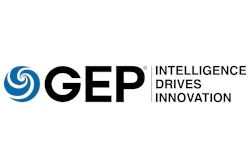
“The best partnerships aren’t dependent on a mere common goal, but a shared path of equality, desire and no small amount of passion.” - Sarah McLean
In today’s evolving business environment with constantly changing market dynamics, a company’s relationship with a strategic partner becomes imperative through the journey of procurement transformation. The presence of partners can help define the objective during the project initiation phase, shape the narrative during the agility phase and help percolate the vision during the stabilization phase of the transformation exercise.
There has been a significant evolution of procurement models over the past decade. The evolution has ranged from being isolated functions to an intervention of different ecosystems such as sourcing, procurement and accounts payable. This integration of the source-to-settle (S2S) function through outsourcing not only results in the agility of services offered, but also resonates in incremental growth in core competency.
Collusion with an end-to-service provider would reduce the fragmented and dispersed nature of working in an agnostic environment, lacking any collaboration between one another.
On the other hand, engaging with niche vendor specialists with end-to-end capabilities results in providing best-in-class services through the understanding and analysis of the procurement maturity. This is achieved through intense and in-depth analysis of the existing purchasing practices of the clients. Additionally, this results in the development of a single-source repository for the global spend data across categories and business units.
For example, through analysis of spend patterns, a leading global pharma company and GEP identified the dispersed nature and localized practices of spend reconciliation at plant levels and amongst different management reporting companies (MRCs). It was through an indigenous approach that allowed for the consolidation of the spend reporting and created an operational dashboard. This helped real-time tracking of spending, not only at the plant or category level, but also at a microscopic view (i.e., at commodity level).
A key measure of success in an implementation of a S2S program is the ability to promote change management across the enterprise. This is a critical phase of the transformational journey, where a strategic partner could help the company from the cradle-to-grave stages of the process, i.e., from requirement gathering during the inception phase of the program, translating into planning for go-live sessions, assessing technology readiness and the resource planning phase. During post-go-live sessions, GEP was instrumental in driving the buying behavior in accordance with the category playbooks and the guided buying principles, which were created at the commodity level across many categories.
A third-party engagement can result in custom, category-specific programs tailored to the client’s procurement needs. Examples of these are automation programs, catalog and content management initiatives, and enhanced guided buying practices. Outsourcing engagement can also be instrumental in conceptualizing an active feedback mechanism through consistent engagement with the business leaders, where the buyers provide periodic projections on the spend patterns and supplier engagement practices. This, in turn, could result in identification of avenues for improvement and understanding the operational impediments in executing the vision. GEP was essential in helping design appropriate strategies to achieve the following for the global pharma client and key outcomes of the partnership showed the following results:
- A repository of a preferred supplier base at the category level, thereby progressively helping the client achieve glide path objectives.
- Compliance, thus reducing risk at the enterprise level by GEP being a stage gate reviewer at key checkpoints in the sourcing continuum.
- The optimization of tail spend, which resulted in improved turnaround time and efficiency due to GEP designing and building a buying gateway (Amazon-like experience) for spot buys.
- Identification of the future state vision, one without boundaries between the plants and the business, and procurement working as one team, providing a seamless user experience.
The liaison with vendors with focused areas of expertise would help in consuming on-demand solutions and enhancing the global footprint (through a concerted delivery center), resulting in more compliance.
Engaging with the strategic partners with a wide portfolio of capabilities from spend analytics support to contract management support can yield immense benefits, such as identifying best-in-class suppliers and onboarding them to preferred supplier status, enhancing user experience through touch channel improvisation (widening catalog items under high-traction categories drives more competitiveness through compulsive three bid buy strategies for purchases above specific thresholds).
The partnership, as with any engagement, encountered its fair share of challenges in terms of resistance to change, lack of technology adoption on a larger scale, process maturity, etc. GEP was been consistent in its efforts to overcome these challenges by conducting workshops, roadshows and active engagement with key end-user segments. The most significant contribution to the client was understanding its passion for serving the community, and enabling it to achieve its objective by expressing a sense of urgency in operations and delivering solutions to patients in a timely manner and to indirectly spread a positive impact on millions of lives across the globe.
The most significant implication in a S2S program, with the help of a third party, would not only be savings, but also minimization of risk by increasing accountability through contract management. This is pivotal for future success by proving to be a gold mine for data and providing a precedent for future procurement activities.










